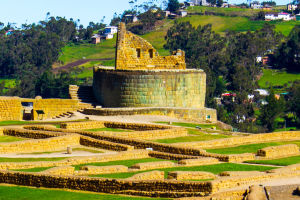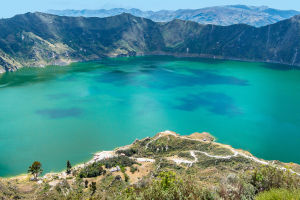Lykkers, get ready to discover one of the most fascinating destinations on Earth—an island group where nature reigns supreme and every encounter feels like a scene from a wildlife documentary.
The Galápagos Islands, off the coast of Ecuador, offer a once-in-a-lifetime experience for those who seek unspoiled beauty, close encounters with unique species, and a deeper understanding of the natural world.
Where Are the Galápagos Islands and How to Reach Them
A Remote Archipelago in the Pacific
Located approximately 1,000 kilometers off the coast of Ecuador, the Galápagos Islands are part of Ecuador's territory and are known globally for their exceptional biodiversity. They are home to several species found nowhere else in the world.
Main Entry Points
To reach the islands, travelers must first fly into either Quito or Guayaquil on mainland Ecuador. From there, flights depart to two main airports: Baltra (connected by ferry to Santa Cruz Island) and San Cristóbal.
Sea Travel Regulations
Arriving by sea is extremely restricted. Independent sailing or exploration without authorized permits is not permitted, ensuring the islands remain protected.
Entry Requirements and Fees
Pre-Flight Steps
Before boarding the flight to the Galápagos, visitors must purchase a Transit Control Card (CTC) for $20 and have all luggage inspected to prevent introducing foreign species to the ecosystem.
Arrival Fees
Upon landing, a $100 cash payment is required for the Galápagos National Park entrance fee. A receipt is provided and must be presented again when leaving the islands.
How to Explore the Galápagos
Independent Travel vs Cruises
Visitors can choose between joining a cruise or organizing island-hopping travel. Cruises offer structured itineraries with guides and typically visit more remote spots. Island hopping allows more flexibility and immersion in local life and can be more cost-effective.
Getting Around the Islands
Only three islands are inhabited—Santa Cruz, San Cristóbal, and Isabela. Public ferries run twice daily between:
- Santa Cruz ↔ Isabela
- Santa Cruz ↔ San Cristóbal
From San Cristóbal to Isabela, only short domestic flights are available.
Transport Schedules and Fares
Boats usually depart at 07:00 and 15:00 and cost $30 per trip. Book in advance during the high season (December to April). Entry taxes apply upon arriving on certain islands—$10 for Isabela and $1 for Santa Cruz (each way).
What to See and Do
Guided Adventures
Due to conservation laws, only 3% of the islands are accessible without a guide. Most tours include snorkeling with fishes, observing blue-footed birds, hiking volcanic landscapes, and visiting conservation centers.
Top Attractions
- Santa Cruz Island: Charles Darwin Research Station, Tortuga Bay, and the lava tunnels.
- San Cristóbal Island: La Lobería beach, Tijeretas Hill, and Punta Pitt.
- Isabela Island: Sierra Negra Volcano, Concha de Perla lagoon, and sanctuaries.
Opening Hours and Costs
Most attractions operate during daylight hours, roughly 06:00–18:00. Guided day tours vary from $50 to $150 depending on the destination and activities included.
Accommodation and Daily Costs
Where to Stay
All three inhabited islands offer a range of options from basic guesthouses to mid-range hotels and eco-lodges. The majority are located in Puerto Ayora (Santa Cruz), Puerto Baquerizo Moreno (San Cristóbal), and Puerto Villamil (Isabela).
Average Costs
Budget accommodations start at $30–$50 per night, while more comfortable hotels range from $80 to $150. Luxury stays can exceed $250 per night. Meals in local restaurants average around $8–$15.
Conclusion
The Galápagos Islands are more than a travel destination—they're a living classroom and a sanctuary for wildlife. This journey is ideal for those who value nature, enjoy discovery, and are ready to adapt to a slower, simpler way of travel.
Visiting the Galápagos requires preparation, awareness of local rules, and a respectful attitude toward the fragile ecosystem. For those who embrace responsible travel, the reward is unmatched: a front-row seat to one of the planet's most remarkable natural environments.


